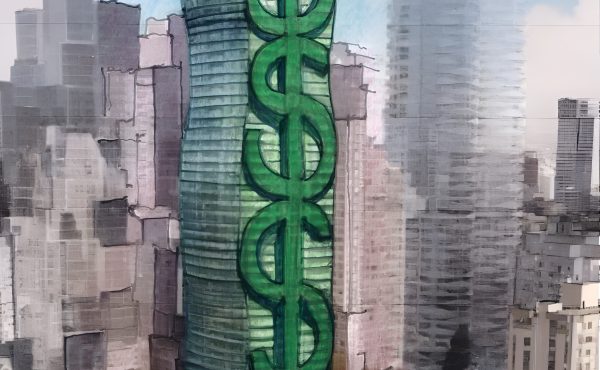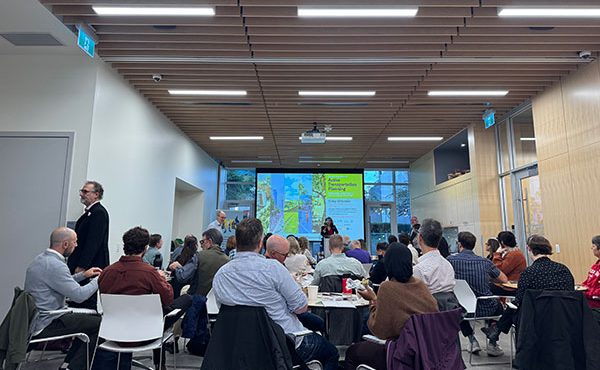

Author: Blaine Brownell, Princeton Architectural Press (2012)
Architecture is the fulfillment of a spatial premise by way of material substance. Throughout history architecture has been shaped by the continual transformation of material technologies and application methods. Its course of development is inseparable from the shifting terrain of technology and the social effects that result. – Blaine Brownell, Introduction.
One can make the argument that materials are fundamental to the expression, performance and experience of buildings. In many ways architecture is an idea of space while materials are the physical expression of that idea. Material Strategies: Innovative Application in Architecture, Blaine Brownell’s latest publication, is a relevant and comprehensive discussion of the ever-changing and significant role of materials in architecture. Brownell, also author of the Transmaterial series from the Princeton Architectural Press, is considered one of the preeminent scholars of advanced materials for architecture and design.
The book is a thoughtful examination of the larger influence of materials and their relationship to culture, behavior, environment and the urban landscape. Brownell posits that material innovation is intrinsic to architecture and is constantly evolving the manner in which we build and experience architecture. The advancements of materials have a tremendous impact on all the objects and spaces we come into contact with and effectually influence our lives. For example, the development of steel and lightweight metal alloys which allow us to build taller, thinner and longer than ever before produced an onslaught of new building types and spatial arrangements that have transformed cities and industry.
Brownell’s research is also concerned with the environmental implications of materials and construction methods, pointing out that ‘buildings consume nearly half of all energy and resources’ in the world. Thus, a considerable amount of innovation and research is devoting itself to responding to such issues.
Material Strategies is a thorough analysis of six fundamental materials; Mineral, Concrete, Wood, Metal, Glass, and Plastic. Each material unfolds through an explanation of its composition, history, modern applications and innovations through a discussion of various precedents that ends in a series of case studies. Brownell explains each material in terms of its “disruptive” technologies and applications — terms commonly used in business and technological industries — wherein ‘disruptive’ implies a new product or material that displaces an old one having exhibited clear advantages. He argues this is a naturally occurring phenomena engendering progress and advancement in architecture that takes materials and their methods of deployment beyond the status quo.
”] Brownell is also careful to point out historical environmental disadvantages of each material and how modern technology is addressing those environmental issues through new methods of extraction and production, material composites, additives, and the marrying of other emerging technologies.
Brownell is also careful to point out historical environmental disadvantages of each material and how modern technology is addressing those environmental issues through new methods of extraction and production, material composites, additives, and the marrying of other emerging technologies.
The case studies are represented through a series of images and are projects which seem to be carefully chosen to represent various applications of a given material. Each one is not only an exemplary illustration of the current state of architecture, but also a representation of material applications that transcend conventions and questions our assumptions of that material.
The Chokkura Plaza and Shelter in Tochigi, Japan by Kengo Kuma is a case study for the chapter on minerals. The project deploys walls constructed of alternating courses of Oya Stone in combination with a thin steel frame producing a perforated chevron pattern. The structure appears light and weightless despite the fact that it is composed of stone.

Some of the cases not only challenge the inherent properties of a material but also the way it is applied to a building such as with Zhu Jianping and China Vanke Co.’s 2049 Pavilion in Shanghai, China. Built for the 2010 Shanghai Expo, the pavilion is composed of a series of large cone forms clad in tile sized wheat straw panels. From a distance the facade appears to be made of brick or ceramic tile, but the unique manner in which the material has been expressed allows it to take on a character beyond that which its materiality implies.
Material Strategies concludes as a rather informative and compact guide to modern building materials. It is a revealing look at the forefront of material innovation but also the evolution and gradual advancement of materials in the design and construction of architecture. The precedents and case studies are an inspiring collection of projects from around the world and illustrate the seemingly infinite possibilities of material innovation through the skillful interpretation of today’s most relevant architects.
***
Larraine Henning has Masters of Architecture from UBC and a Bachelors of Environmental Design from UofM. She has worked in both the Netherlands and Canada for a variety of architectural offices, and also works within the mediums of photography and web design.



